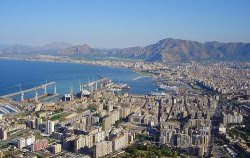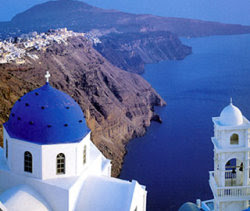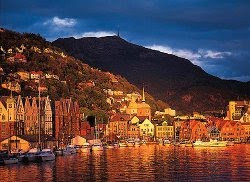
The Bulgarian city of Varna has a millennial history. It has a good location and good visibility (almost 270 degrees). In the small cape where presently is located the naval station terminal, there was an ancient tribe of fishermen. In 1878 Varna was finally liberated by the Ottoman rule and became the largest port in Bulgaria. At the end of the 19th century Varna was linked to the capital Sofia by railway. Many factories have been built, industrial fishing has grown. Varna is rapidly becoming a naval station undergoing any European influence in architecture and naval transport and at the same time, a privileged place for the Bulgarian intellectual elite. Nowadays Varna is the center of the northern Black Sea coast and a landmark of the construction of resorts around it. The city is an industrial center and recently it became the second largest city in Bulgaria after the capital Sofia.
Places of interest in Varna
The Roman SPA is located in the heart of the city center. They are built in second century during the reign of Emperor Antoninus Pius and are abandoned during the barbarian invasions in the fifth century. Restored and preserved, they deserve the visits of tourists. In the 14th century there was a pottery and later was built a small district. The Roman Bath is dated from the third century and is built in layers of stones and bricks related to a special mixture, consisting of mortar and tiles and bricks crumbled. The walls are covered with a waterproof plaster, the floor is tiled in marble and the walls in some rooms, too, are covered with marble. In the 5th century the building was substantially enlarged and rebuilt in connection with the expansion of this area of the city. Today, it is an archaeological site to visit.
The Cathedral of the Holy Virgin is considered emblematic for the Bulgaria's sea capital. It rises in the center aisle in front of the theater. A bus that goes to all of the main directions in the suburbs, including the airport, departs from the square in front of the church. The cathedral was built in 1886 by master masons of the time of awakening after a national plan of St. Petersburg. Construction and painting have taken quite long and it was officially opened in 1910. The carved wooden altar and the throne of the bishop are developed by masters from Macedonia Debar. The main compositions of wall paintings were made in 1950.
The Sea Garden is the another landmark of the city of Varna. It dates from the late 19th century. Today in the Garden is located an amphitheater, astronomy complex which is the first in Bulgaria, an observatory, a planetarium and a tower, land attractions and a small channel for sports rowing children, a pool for water cycles and a zoo. The outdoor theater is a center of many events. The central sea baths and the beach are located beneath the Sea Garden: there is a polyclinic, a set of homes for the treatment of curative mud and water spa, two docks, a few restaurants and nightclubs.
The church "Saint Nicolas" is located near the Sea Garden and dates of 1886: it has interesting wall paintings from old masters of icons representing different schools of painting in Bulgaria.
The Russian Monument is located in the park near the sea. It was built in honor of fallen Russian soldiers died for freedom of Varna.
The Asparuh Bridge connects downtown neighborhoods Asparouhovo and Galata. It is the longest bridge in Bulgaria and its construction work continues. The local club of extreme sports including bungee jumping organizes sport events here. To the east of the bridge is seen the bay of Varna and the Cape Galata, in the West - Lake of Varna.
The Archaeological Museum is located in the old building of a school in the era of National Awakening. Visitors have the opportunity to observe models of pile dwellings from the Paleolithic age, the Hall of archaic art and crafts, the room of the old art which presents the most important and impressive collection of objects and relics from the Bulgaria's early Christian church.
The Varna's Art Gallery was opened in 1950. It presents the paintings of the most prominent Bulgarian artists, as well as works by many foreign artists, donated by individuals.
The second biggest Bulgarian sea resort, Golden Sands, lies thirty kilometres north of Varna.
More Varna resources: Varna Guide, Wikipedia, Hotels in Varna, Bulgarian Sea Resorts - Varna, Europe Directory - Varna.






